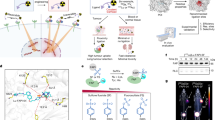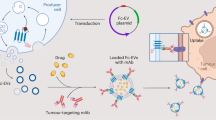Abstract
[68Ga]Ga-PSMA-11, a urea-based peptidomimetic, is a diagnostic radiopharmaceutical for positron emission tomography (PET) imaging that targets the prostate-specific membrane antigen (PSMA). The recent Food and Drug Administration approval of [68Ga]Ga-PSMA-11 for PET imaging of patients with prostate cancer, expected follow-up approval of companion radiotherapeutics (e.g., [177Lu]Lu-PSMA-617, [225Ac]Ac-PSMA-617) and large prostate cancer patient volumes requiring access are poised to create an unprecedented demand for [68Ga]Ga-PSMA-11 in nuclear medicine clinics around the world. Meeting this global demand is going to require a variety of synthesis methods compatible with 68Ga eluted from a generator or produced on a cyclotron. To address this urgent need in the PET radiochemistry community, herein we report detailed protocols for the synthesis of [68Ga]Ga-PSMA-11, (also known as HBED-CC, Glu-urea-Lys(Ahx)-HBED-CC and PSMA-HBED-CC) using both generator-eluted and cyclotron-produced 68Ga and contrast the pros and cons of each method. The radiosyntheses are automated and have been validated for human use at two sites (University of Michigan (UM), United States; Royal Prince Alfred Hospital (RPA), Australia) and used to produce [68Ga]Ga-PSMA-11 for patient use in good activity yields (single generator, 0.52 GBq (14 mCi); dual generators, 1.04–1.57 GBq (28–42 mCi); cyclotron method (single target), 1.47–1.89 GBq (40–51 mCi); cyclotron method (dual target), 3.63 GBq (98 mCi)) and high radiochemical purity (99%) (UM, n = 645; RPA, n > 600). Both methods are appropriate for clinical production but, in the long term, the method employing cyclotron-produced 68Ga is the most promising for meeting high patient volumes. Quality control testing (visual inspection, pH, radiochemical purity and identity, radionuclidic purity and identity, sterile filter integrity, bacterial endotoxin content, sterility, stability) confirmed doses are suitable for clinical use, and there is no difference in clinical prostate cancer PET imaging using [68Ga]Ga-PSMA-11 prepared using the two production methods.
This is a preview of subscription content, access via your institution
Access options
Access Nature and 54 other Nature Portfolio journals
Get Nature+, our best-value online-access subscription
$29.99 / 30 days
cancel any time
Subscribe to this journal
Receive 12 print issues and online access
$259.00 per year
only $21.58 per issue
Buy this article
- Purchase on Springer Link
- Instant access to full article PDF
Prices may be subject to local taxes which are calculated during checkout









Similar content being viewed by others
Data availability
Data generated during this study are included in this published article and the supporting primary research articles. Raw data for recent representative production batches of [68Ga]Ga-PSMA-11 prepared using generator-derived and cyclotron-produced 68Ga, according to the procedures reported in this article, have also been deposited at https://doi.org/10.6084/m9.figshare.16628914. Additional information is available on request to the authors.
References
Hermann, K. et al. Radiotheranostics: a roadmap for future development. Lancet Oncol. 21, e146–e156 (2020).
Qaim, S. M. Theranostic radionuclides: recent advances in production methodologies. J. Radioanal. Nucl. Chem. 322, 1257–1266 (2019).
Kopka, K. A short history of transforming the diagnostic tracer PSMA-11 into the theranostic variant PSMA-617. Endocr. Abstr. 47, OC29 (2016).
Al-Nahas, A. et al. Gallium-68 PET: a new frontier in receptor cancer imaging. Anticancer Res 27, 4087–4094 (2007).
Decristoforo, C. Gallium-68—a new opportunity for PET available from a long shelf-life generator—automation and applications. Curr. Radiopharm. 5, 212–220 (2012).
Filippi, L. et al. Theranostic approaches in nuclear medicine: current status and future prospects. Expert Rev. Med. Dev. 17, 331–343 (2020).
Pencharz, D. et al. Theranostics in neuroendocrine tumours: somatostatin receptor imaging and therapy. Br. J. Radiol. 91, 20180108 (2018).
Werner, R. A. et al. The theranostic promise for neuroendocrine tumors in the late 2010s—where do we stand, where do we go? Theranostics 8, 6088–6100 (2018).
CancerNet. Prostate Cancer: Statistics https://www.cancer.net/cancer-types/prostate-cancer/statistics (accessed 27 April 2021).
Afshar-Oromieh, A. et al. PET imaging with a [68Ga]gallium-labelled PSMA ligand for the diagnosis of prostate cancer: biodistribution in humans and first evaluation of tumour lesions. Eur. J. Nucl. Med. Mol. Imaging 40, 486–495 (2013).
Abghari-Gerst, M. A comprehensive assessment of 68Ga-PSMA-11 PET in biochemically recurrent prostate cancer: results from a prospective multi-center study in 2005 patients. J. Nucl. Med. https://doi.org/10.2967/jnumed.121.262412 (2021).
Carlucci, G. 68Ga-PSMA-11 NDA approval: a novel and successful academic partnership. J. Nucl. Med. 62, 149–155 (2021).
Telix. FDA approves Telix’s prostate cancer imaging product, Illuccix® [press release]. https://telixpharma.com/news-media/fda-approves-telixs-prostate-cancer-imaging-product-illuccix/ (20 December 2021).
Stephens, K. FDA approves first commercially available PSMA PET imaging agent for prostate cancer. AXIS Imaging News https://www.proquest.com/docview/2533524558 (2021).
Lee, C. H. et al. The feasibility of 64Cu-PSMA I&T PET for prostate cancer. Cancer Biother. Radiopharm. https://doi.org/10.1089/cbr.2020.4189 (2021).
Jones, W. PSMA theranostics: review of the current status of PSMA-targeted imaging and radioligand therapy. Cancers 12, 1367 (2020).
Lenzo, N. et al. Review of gallium-68 PSMA PET/CT imaging in the management of prostate cancer. Diagnostics 8, 16 (2018).
Massat, M. B. Nuclear medicine prepares for greater 68Ga demand. Appl. Radiol. 50, 30–31 (2021).
Jackson, I. M. et al. Use of 55 PET radiotracers under approval of a Radioactive Drug Research Committee (RDRC). EJNMMI Radiopharm. Chem. 5, 24 (2020).
Rodnick, M. E. et al. Cyclotron-based production of 68Ga, [68Ga]GaCl3, and [68Ga]Ga-PSMA-11 from a liquid target. EJNMMI Radiopharm. Chem. 5, 25 (2020).
Becker, K. V. et al. A review of accelerator-produced Ga-68 with solid targets. Curr. Radiopharm. https://doi.org/10.2174/1874471013666201224113651 (2020).
Svedjehed, J., Pärnaste, M. & Gagnon, K. Demystifying solid targets: simple and rapid distribution-scale production of [68Ga]GaCl3 and [68Ga]Ga-PSMA-11. Nucl. Med. Biol. https://doi.org/10.1016/j.nucmedbio.2021.10.002 (2022).
Do Carmon, S. J. C., Scott, P. J. H. & Alves, F. Production of radiometals in liquid targets. EJNMMI Radiopharm. Chem. 5, 2 (2020).
Gallium (68Ga) PSMA-11 injection. European Pharmacopoeia. 10, 5397–5398 (2021).
Cutler, C. S. & Minoshima S. Shortage of Germanium68/gallium68 generators in the United States https://s3.amazonaws.com/rdcms-snmmi/files/production/public/Ga68%20shortage%20letter.pdf (Society of Nuclear Medicine and Molecular Imaging, 2018).
Soto-Montenegro, M. L. et al. Meningiomas: a comparative study of 68Ga-DOTATOC, 68Ga-DOTANOC and 68Ga-DOTATATE for molecular imaging in mice. PLoS ONE 9, e111624 (2014).
Martin, R. et al. Cationic eluate pretreatment for automated synthesis of [68Ga]CPCR4.2. Nucl. Med. Biol. 41, 84–89 (2014).
Society of Nuclear Medicine and Molecular Imaging. FDA approves cyclotron-produced Ga-68 DOTATOC for neuroendocrine tumors [press release]. www.snmmi.org/NewsPublications/NewsDetail.aspx?ItemNumber=34801 (2020).
Gallium (68Ga) Chloride (accelerator produced) solution for radiolabelling. European Pharmacopoeia. 10, 4864–4865 (2020).
Acknowledgements
The authors thank A. Afshar-Oromieh, K. Kopka and their colleagues at the University Hospital of Heidelberg and the German Cancer Research Center (DKFZ) Heidelberg for the valuable assistance in qualifying UM for clinical production of [68Ga]Ga-PSMA-11. In addition, the authors thank S. Happel at Triskem for valuable suggestions, feedback and initial resin samples. P.J.H.S. thanks the University of Michigan Department of Radiology for financial support.
Author information
Authors and Affiliations
Contributions
K.G. and P.J.H.S. conceived and developed the project, and provided supervision and funding. C.S., D.C.P., J.F. and K.G. developed the target and initial chemistry sequences at GE. M.E.R., M.C., L.B. and S.P. conducted radiosyntheses at UM. B.D.H. and B.G.H. provided QC and quality assurance at UM. M.R.P. and M.A.-G. are nuclear medicine physicians at UM. D.S. and A.K. conducted radiosyntheses and QC at RPA. S.E. assisted with project development and target and cyclotron aspects at RPA. M.J.F. is PET physician, provided funding for the RPA contribution and contributed to the manuscript.
Corresponding authors
Ethics declarations
Competing interests
K.G., J.F., D.C.P. and C.S. are employees of GE Healthcare. S.E., A.K., D.S., M.J.F., M.E.R., M.C., B.G.H., B.D.H., M.A.-G., S.P., L.B., M.R.P. and P.J.H.S. declare no conflict of interest.
Peer review
Peer review information
Nature Protocols thanks Leonardo L. Fuscaldi and the other, anonymous, reviewer(s) for their contribution to the peer review of this work.
Additional information
Publisher’s note Springer Nature remains neutral with regard to jurisdictional claims in published maps and institutional affiliations.
Related links
Key references using this protocol
Jackson, I. M. et al. EJNMMI Radiopharm. Chem. 5, 24 (2020): https://doi.org/10.1186/s41181-020-00110-z
Rodnick, M. et al. EJNMMI Radiopharm. Chem. 5, 25 (2020): https://doi.org/10.1186/s41181-020-00106-9
Abhari-Gerst, M. et al. J. Nucl. Med. 62, jnumed.121.262412 (2021): https://doi.org/10.2967/jnumed.121.262412
Key data used in this protocol
Jackson, I. M. et al. EJNMMI Radiopharm. Chem. 5, 24 (2020): https://doi.org/10.1186/s41181-020-00110-z
Rodnick, M. et al. EJNMMI Radiopharm. Chem. 5, 25 (2020): https://doi.org/10.1186/s41181-020-00106-9
Abhari-Gerst, M. et al. J. Nucl. Med. 62, jnumed.121.262412 (2021): https://doi.org/10.2967/jnumed.121.262412
Supplementary information
Rights and permissions
About this article
Cite this article
Rodnick, M.E., Sollert, C., Stark, D. et al. Synthesis of 68Ga-radiopharmaceuticals using both generator-derived and cyclotron-produced 68Ga as exemplified by [68Ga]Ga-PSMA-11 for prostate cancer PET imaging. Nat Protoc 17, 980–1003 (2022). https://doi.org/10.1038/s41596-021-00662-7
Received:
Accepted:
Published:
Issue Date:
DOI: https://doi.org/10.1038/s41596-021-00662-7
This article is cited by
-
PSMA PET/CT: joint EANM procedure guideline/SNMMI procedure standard for prostate cancer imaging 2.0
European Journal of Nuclear Medicine and Molecular Imaging (2023)
Comments
By submitting a comment you agree to abide by our Terms and Community Guidelines. If you find something abusive or that does not comply with our terms or guidelines please flag it as inappropriate.



